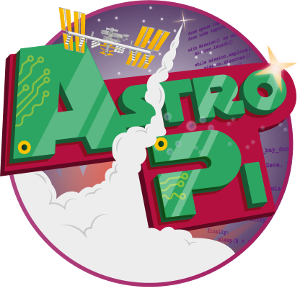|
Bookshout has announced that they have partnered with South by Southwest this year. Conference attendees and remote online followers will be able to purchase e-books from key speakers, authors, and panelists. Attendees can purchase e-books exclusively through the BookShout platform. Throughout the week of SXSW, attendees will be able to text-to-buy as well as share interesting content opportunities with their Facebook and Twitter networks. Authors and sponsors will also be able to promote these opportunities to their own audiences, dramatically increasing the reach, interest, marketing, and purchasing opportunities for all. Bookshout has thousands of e-books on their platform and has pioneered the concept of marketing their services towards businesses. Instead of a consumer focused bookstore they partner up with companies to provide coupon codes that can be redeemed online. They recently celebrated a milestone that had them distribute 9.5 million e-book coupons. South by Southwest will be occurring March 13-22, 2015 in Austin, Texas. Bookshout Partners with South by Southwest for eBooks is a post from: Good e-Reader |
A Semi-automated Technology Roundup Provided by Linebaugh Public Library IT Staff | techblog.linebaugh.org
Wednesday, December 10, 2014
Bookshout Partners with South by Southwest for eBooks
What Features Would the Ultimate e-reader Have?
|
e-Reader technology has come a long way since the first Kindle hit the market in 2007. Not only have the prices come down from over $300 for your standard six inch device, but e-paper has been polished and more refined. Companies such as Amazon, Barnes and Noble and Kobo invest copious amounts of money in research and development to give customers the best reading experience possible. But, what would constitute the ultimate e-reader? Good e-Reader has been reviewing dedicated e-ink devices since 2008 and we have really seen the industry grow. The devices in 2014 all offer faster page turns and really high resolution to make reading much more intuitive. We have looked at hundreds of different devices that come out over the years and we really have a sense on what customers want in an e-reader and what features everyone yearns for. Today, we look at the e-paper technology, hardware and features that would capture the imagination of millions of digital readers. The Ultimate e-reader Six inches – The most common screen size of e-readers today is six inches, because its more pocket friendly and many shells bought from China price has come down dramatically. Larger e-readers are possible, but the reason they are so expensive is because all of the internals cost more due to the lack of mass production. 1430 x 1080 resolution – This is currently the benchmark established by the Kindle Voyage for the highest resolution in the world. Most e-readers on the market have 1024 X 758 which look quite a bit dated by 2014-2015 standards. The future of e-readers is super high resolution and at least 300 PPI. e-Ink Mobius – Mobius uses a TFT technology that will enable the development of much lighter and rugged products. Mobius displays can weigh less than 50% of an equivalent glass based TFT. This is particularly important for mobile products requiring larger display areas, such as the Sony Digital Paper and Pocketbook CAD Flex. Capacitive Touchscreen – Many e-readers still employ Neonode IR touchscreen technology which provides a diminished experience for people used to interacting with their smartphones and tablets. The ultimate e-reader would have the same type of capacitive touch with the screen flush with the bezel. Notable e-readers that have this are the Kobo Aura and Tolinio Vision 2. Front-Lit Display (Glowlight) – Smartphones and tablets use LCD screen technology that have the light emitting from behind the screen into your eyes. A new study from the Lighting Research Center at Rensselaer Polytechnic Institute shows that a two-hour exposure to electronic devices with self-luminous "backlit" displays causes melatonin suppression, which might lead to delayed bedtimes, especially in teens. Front-Lit displays have 4-6 LED lights that project light evenly across the screen, not into your eyes. The 3rd generation lighting system has been very polished and refined. Flexible rubber housing – Only the Pocketbook CAD and Wexler Flex One have flexible rubber housing and it allows it to be more durable for transportation and daily use. Hybrid Magnesium Alloy – The Kindle Voyage has this new technology on the back , it prevents finger oil from staining it. 1.2 GHZ Duel Core processor – In order for a more optimized experience when opening books, accessing menu features and running apps, a dual core processor is a must. 1 GB of RAM – Many of the most popular e-readers out there only have 128 or 512 MB of RAM. Having additional RAM would step up the performance and allow for larger buffering system for multitasking. SD card – Many e-readers these days forgo the SD card in order to promote their own cloud services. SD Cards are really important because you don’t need to rely on WIFI to download content. Audio – e-Reader companies these days have all abandoned audio in order to provide the lowest cost device possible. The ultimate e-reader would have stereo speakers, preferably Dolby Audio and a 3.55 mm headphone jack. This would allow users to listen to music and audiobooks. Microphone – This would allow people to interact with the e-reader and give voice command prompts. It would also allow people to use the audio chat feature found in apps like Skype or Whatsapp Messenger. Ivonna Text to Speech – One of the big reasons why schools have not embraced e-readers in a big way is because of the lack of accessibility for people who are visually disabled. The Ivonna system would allow every single aspect of the interface to have audio. Disabled people would be able to say “Open Audio Player” and “Play Audiobook X”. If they don’t have any audiobooks they could simply buy e-Books via audio command prompts and then have the books read to them. Camera that takes pictures in e-ink – The Pocketbook Ultra is the only e-reader in the world with a built in camera. It has built in OCR software to be able to scan books or just snap selfies. Sadly, when you take pictures and export them to your computer, they are not in high resolution greyscale e-ink, but full color. The ultimate e-reader would take pictures and export them in black and white. Duel Band WIFI – Wireless internet access has never really changed in e-reader technology and smartphones/tablets have all embraced duel band WIFI. This allows for content to be downloaded faster, such as larger dictionaries or apps. 3G/4G Micro SIM – Amazon is the only company left that still provides data access, so customers can buy eBooks while outside a WIFI zone. Having the ability to buy your own low-cost data plan through your local provider would not limit you anymore and you can buy content on vacation, at the cabin or beach. It would certainly allow for more impulse buys and offload the cost of the data to the customer. Extensive Dictionary Support – Many e-readers ship with a single dictionary, depending on the region you live in. The ultimate e-reader would have all of the major European and Asian languages available to download. Expanded Font Support – Many e-readers only ship with six different font types and 12 variations of size. I think its important to have a lower selection of fonts, to not confuse your average user but borrow a page out of Kobos playbook by allowing users to load in their own fonts they buy or download online. Reading a newspaper is far more effective in Times New Roman, than generic font #8. Android OS – The biggest trend of 2014 has been the shift from Linux based operating systems for e-readers to Android. Icarus, Onyx and Pocketbook have been the only companies laughing modern devices with a vanilla version of Android. This is very important, as it doesn’t lock users down into any one specific ecosystem, but instead gives them freedom. Bluetooth and GPS – There are not many e-readers at all in the world that have GPS and Bluetooth technology, but they should. This would allow users to transfer books from their computer to their e-reader without having to plug it into their PC. It would also allow people to plug in external speakers, like a Beats Pill or keyboard. In addition the GPS aspect would allow people to use new technology to prevent theft. Anti-Theft Software – Taking advantage of the GPS technology in the ultimate e-reader a simple app, such as “Find my e-Reader” would allow people to track down their device if they misplaced or lost it. It would also be able to remotely wipe all personal information if it were to be stolen, limiting the possibilities of identity theft What Features Would the Ultimate e-reader Have? is a post from: Good e-Reader |
URL: http://goodereader.com/blog/electronic-readers/what-features-would-the-ultimate-e-reader-have
Enclosure: http://goodereader.com/blog/podpress_trac/feed/86032/0/goodereader-radio-dec110214.mp3
Amazon Adds Remote Alarm, Find, Lock and Reset Features to Fire Tablets
| Today I was checking out the Manage Your Devices section at Amazon and noticed some new options under “Device Actions” for Fire Tablets. Maybe I just haven’t been paying close enough attention lately, but there seems to be a whole set of new functions available that I don’t remember ever seeing before, including several remote […] |
URL: http://feeds.the-ebook-reader.com/~r/feedburner/cmWU/~3/QfP422Yh61A/
A Word of Caution About Buying Used Kindles
| When it comes to buying used electronics, you’ve got to be careful who and where you buy them from. This is especially true when purchasing used Kindle ebook readers and Fire tablets. Unlike most brands of tablets and ereaders, Kindles can be blacklisted. This happens when someone reports their Kindle as lost or stolen to […] |
URL: http://feeds.the-ebook-reader.com/~r/feedburner/cmWU/~3/9e4Xq8Ph8fk/
The Hemingwrite e-Paper Typewriter Now Available on Kickstarter
|
Typewriters burst onto the literary scene in the 1860s's and quickly became indispensable tools for authors to quickly write their next book. They fell out of favor in the 1980's as the world started to embrace digital publishing, which provided the ability to spellcheck their work and send manuscripts quickly to agents and friends. The Hemingwrite, seeks to marry the old school typewriter with a modern digital version, with an e-paper display. The Hemingwrite is being billed as a distraction free experience, it is meant to write eBooks, without email, or anything else that might get in the way of crafting your next novel. The Hemingwrite has been generating a ton of positive press when it was first announced back in October and has just been listed on Kickstarter to get funding. Within one hour, the Hemingwrite has received $107,281 in funding and the goal is $250,000 by Jan 23 2015. Likely, it will smash the companies expectations and should generate the necessary revenue in 24 hours. The huge demand for the Hemingwrite goes to show that there is a market for authors who are looking for an alternative to computers or tablets. The e-Paper display will last for up to 10 weeks The Hemingwrite e-Paper Typewriter Now Available on Kickstarter is a post from: Good e-Reader |
URL: http://goodereader.com/blog/e-paper/the-hemingwrite-e-paper-typewriter-now-available-on-kickstarter
Amazon Loses Another Publishing Boss, Gains Two More
|
The head position at Amazon publishing, is not exactly cursed, but people tend not to last very long. A year into the job, Daphne Durham is leaving the company. Daphne took over the reigns of the publishing division from Larry Kirshbaum, who had been with Amazon since 2011 and left at the beginning of 2013. Initially Larry served as the vice president and publisher of Amazon Publishing’s New York office and later as editorial director for imprints on both the east and west coasts. He was famous for bringing in big names such as actress and director Penny Marshall and best-selling writer Timothy Ferriss. Daphne on the other hand had been with Amazon for over 15 years, prior to taking over Amazon Publishing. Instead of focusing on big names, Durham set her eyes on niche markets, such as mysteries, science fiction and religious titles. One of the most interesting things that was accomplished under her watch was looking at the big data of the Kindle e-Book business to find unsigned authors and push into untapped markets such as fan fiction. In the past, Amazon has always had one person in charge of the publishing division. This obviously has not worked out very well, because the job has been, well cursed. In order to create more fluidity, Amazon is going to be spreading the duties out to two different people, one based in Seattle and one in the critical New York market. Mikyla Bruder, who is based in Seattle, currently runs global marketing for Amazon Publishing. She will become publisher for Amazon's Montlake Romance, Thomas & Mercer, Skyscape, Lake Union, 47North and Jet City Comics imprints. David Blum is based in New York and is best known for being the editor of Kindle Singles. He will take over control of Amazon's Little A and Two Lions imprints. His mandate is to expand Amazon's nonfiction publishing under Little A. Amazon Loses Another Publishing Boss, Gains Two More is a post from: Good e-Reader |
URL: http://goodereader.com/blog/digital-publishing/amazon-loses-another-publishing-boss-gains-two-more
Video: Cybook Ocean Frontlight Display Test
|
The Cybook Ocean is the first eight inch touchscreen e-reader and the main selling point is that you can fit more text on the screen at any given time than your standard six inch device. One of the big advancements of the Ocean is the new illumination technology that allows you to have control over the brightness of the screen during the day or night. Today, we take a look at the Cybook Ocean and demonstrate how the front-lit technology works. You will get a sense of how the interface is designed and how the e-reader performs in complete darkness. One of the very unique things is “nighttime reading mode” which will turn the background black and the text white. This mode, is normally reserved exclusively for smartphone and tablet apps. How does it perform on the Ocean? Check out the video below.
Video: Cybook Ocean Frontlight Display Test is a post from: Good e-Reader |
URL: http://goodereader.com/blog/electronic-readers/video-cybook-ocean-frontlight-display-test
December book and movie adaptation read-alikes
| |
URL: http://feedproxy.google.com/~r/OverdrivesDigitalLibraryBlog/~3/9C4LrxrQnLs/
Astro Pi: Your Code in Space
| Dave: We’re really happy to announce a new project in partnership with British Astronaut Tim Peake, UK Space and the European Space Agency: we’re sending Raspberry Pis to the International Space Station! Read on to find out how to get your code running on them… Leading UK space organisations have joined forces with British ESA Astronaut Tim Peake and Raspberry Pi to offer students a chance to devise and code their own apps or experiment to run in space. Two Raspberry Pi computers are planned to be flown to the International Space Station (ISS) as part of Tim’s 6 month mission and both will be connected to a new “Astro Pi” board, loaded with a host of sensors and gadgets. Launched today at an event held by the UK Space Agency, the Astro Pi competition will be officially opened at the BETT conference (21-24 January) and will be open to all primary and secondary school aged children who are resident in the United Kingdom. During his mission to the ISS, Tim Peake plans to deploy the Astro Pi computers in a number of different locations on board the ISS. He will then load up the winning code whilst in orbit, set them running, collect the data generated and then download this to Earth where it will be distributed to the winning teams and ade freely available on the Astro Pi website. Universities, Science and Cities Minister Greg Clark said:
Tim Peake added:
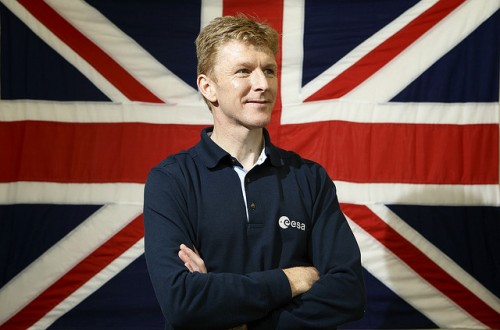 Major Tim Peake – photo provided by UK Space Agency under CC BY-ND To help students on their way in developing their code, five inspirational themes have been devised to stimulate creativity and scientific thinking. The themes are Spacecraft Sensors, Satellite Imaging, Space Measurements, Data Fusion and Space Radiation. In the primary school age category, teams will be asked to devise and describe an original idea for an experiment or application which can be conducted on the Astro Pi by Tim during his mission. The two best submissions will get the opportunity to work with the Astro Pi team to interpret their ideas and the crack team at the Raspberry Pi Foundation will then code them ready for flight on the ISS. In the secondary school age group, the competition will be run across three age categories, one for each of Key Stages 3, 4 and 5 (in England and Wales, and their equivalent ages in Scotland and Northern Ireland). In the first phase, competitors can submit their ideas for experiments and applications. At least the best 50 submissions in each age category will win a Raspberry Pi computer and an Astro Pi board on which to code their idea. In phase 2, all teams will develop code based on their original concept and two winning teams will be selected in each age category. The winning teams' code will be readied for flight by the Raspberry Pi Foundation and CGI. As well as having their code uploaded to the ISS, all winning teams will each receive a class set of Raspberry Pi and Astro Pi boards, meet the Astro Pi team and participate in a winners’ event during Tim’s flight. 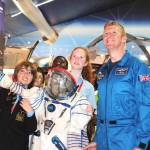  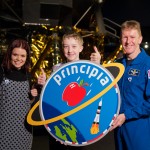  In addition to the main prizes, each of the UKspace companies supporting the project have offered a prize. These prizes will be awarded to the best submission associated with each of the themes, across the age ranges. Launching the Astro Pi computers, and consequently the successful implementation and completion of this competition is subject to nominal progress through the ESA integration programme and operations on-board the ISS. The organisations involved in the Astro Pi competition include the UK Space Agency, UKspace, Raspberry Pi, ESERO and ESA. The UKspace team, led by SSTL, include Airbus DS, CGI, the Space KTN, National Nuclear Laboratory and National Physical Laboratory.
Dave: The Astro Pi board will be a Raspberry Pi HAT and will comprise of the following:
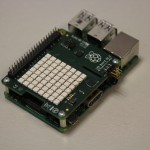 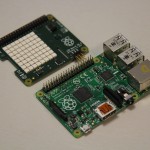 Keep an eye on our blog, the Astro Pi website and @astro_pi on twitter for updates! More information will be made available after the competition launch at BETT in January. |






